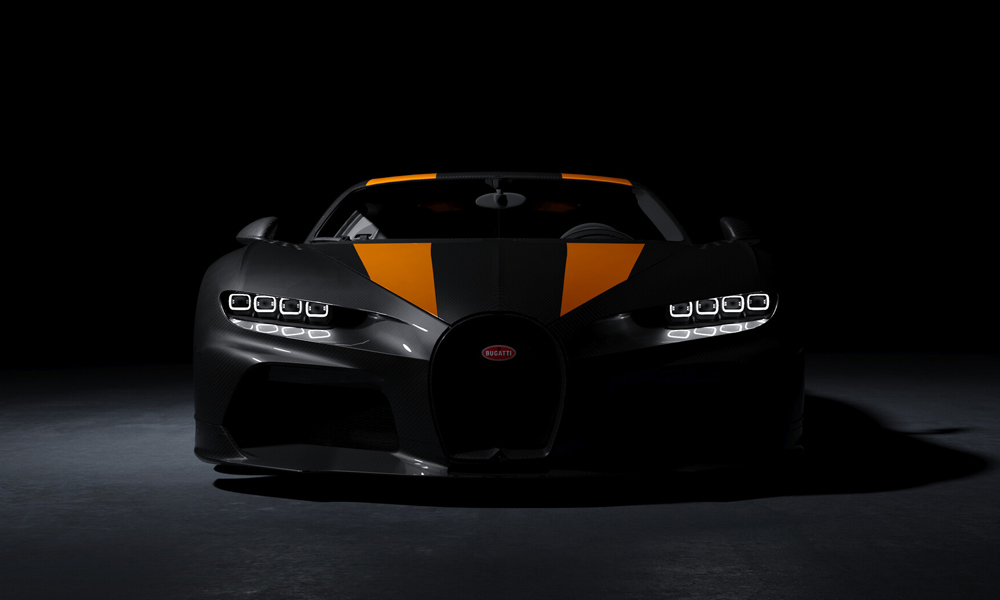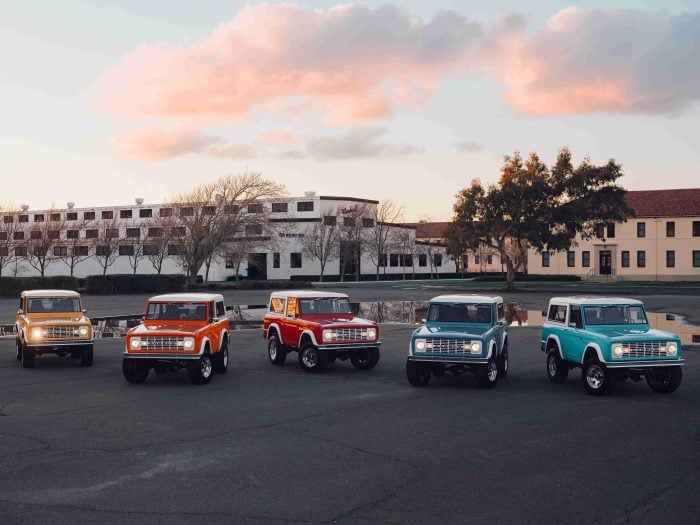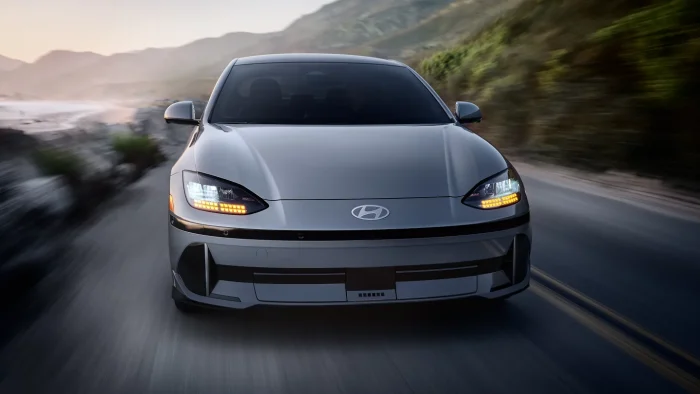Man has always been in the pursuit of speed, whether it’s on land, sea, or in the air. Horses, chariots, cars, motorcycles, airplanes, you name it, and just because we’re in the modern age doesn’t mean that thirst has been quenched. When it comes to automobiles, the battle of speed for street-legal, production vehicles is a fierce one. Then there’s the whole Land Speed Record fight where rocket-powered insanity is the recipe of the day. For production cars, the speed record reign is typically short-lived, where one might get unseated merely a couple of years later, and numerous factors play a role because it’s not just about horsepower. Aerodynamics and downforce, weight, air volume, cooling, tires, gear ratios, and fuel must all be accounted for.
Also, keep in mind that the fastest (top speed) and quickest (acceleration) cars are two different animals, although the fastest cars in the world also tend to accelerate very quickly due to their sheer power output. But the major contenders aren’t just one-trick ponies that are all about straight-line speed, and at these ultra-premium price points, each one is bespoke, technologically rich, and built meticulously by hand. They’re the kinds of vehicles that can only be attained by the truly wealthy. Nevertheless, it takes more than just deep pockets to drive these cars to their limits.
Record-setting attempts are observed by FIA-sanctioned bodies, and requirements are that the speed recorded must be the average of two runs (passes) in opposite directions conducted within one hour of each other. Any new land speed record must exceed the previous record by a minimum of one percent, and everything must be objectively verified. Here are the biggest players in the quest for speed.
Production Vehicles
It’s just like it sounds. The fastest street-legal cars can be driven on any public road or highway just like a conventional passenger vehicle. Yep, they can pull up next to that Nissan Kicks that hits 60 mph from a standstill in almost eleven seconds and make a run for groceries, too. What makes them street legal? For example, in the U.S., regulations from state to state can vary a little bit (California emissions are the strictest), but they’re generally consistent in terms of requiring standards for crash safety/structure, lights, turn signals, wheels/tires, safety equipment, and emissions. Not all of the cars listed here are street legal in America, but they qualify in other countries. Here are the top three contenders for the world’s fastest cars that you can also drive on the street.
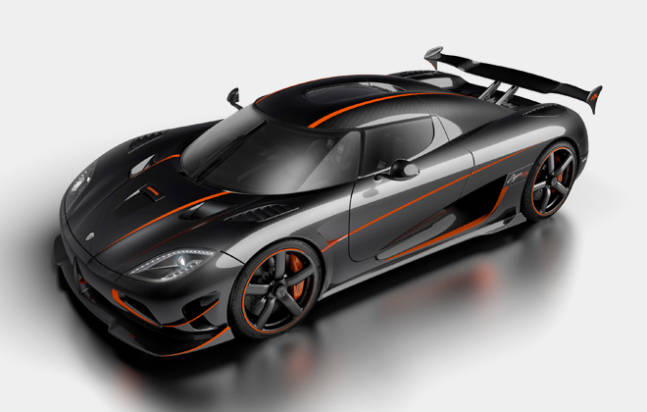
3. Koenigsegg Agera RS – 278 MPH (2017)
Koenigsegg Automotive out of Ängelholm, Sweden has been in the business of building supercars and hypercars for 25 years and running. The Agera RS is its record-setter, and what a car it is. The structure is carbon fiber with aluminum honeycomb, making it ultra-rigid and surprisingly lightweight. The aerodynamics include active front flaps, an active dynamic spoiler, and an active underbody flap system for optimal downforce and high-speed stability.
The Agera RS hit a blistering 278 mph speed record on an old airstrip in Vandel, Denmark, and the normal 1,160-horsepower twin-turbo V8 was elevated to 1,360 horses via the 1 MegaWatt package. Only a handful of cars were ever equipped with the upgrade, and with it, the Agera RS could accelerate to 60 mph in 2.6 seconds and to 124 mph in less than 7 seconds. Hell, the RS isn’t even all-wheel drive but sends power only to the rear wheels, making the achievement all the more impressive. Furthermore, the record was set in a customer’s car, as opposed to a special production version. The record didn’t last long, but that doesn’t detract from the monumental achievement.
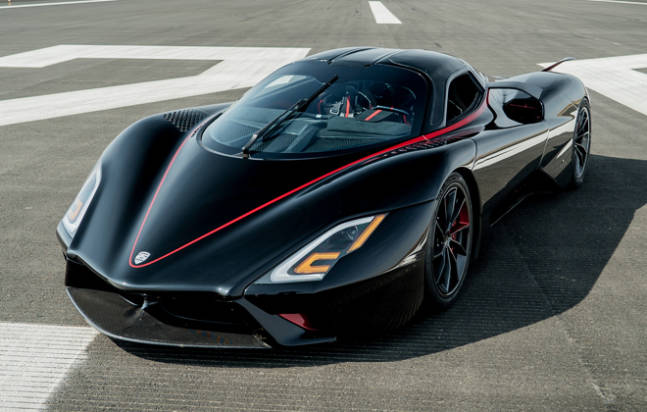
2. SSC Tuatara – 282.9 MPH (2021)
The lone American in this dogfight looks like a cross between a Ferrari Enzo and a Learjet. The Tuatara is clad in aerospace-grade carbon-fiber skin that helps it weigh in at mere 2,750 pounds dry, and the mid-mounted twin-turbo flat-plane crank 5.9-liter V8 weighs just 428 pounds. 0-60 comes in a mere 2.5 seconds, and the rapid gearshifts are handled by a seven-speed automated manual transmission. In track mode, the 4.0-inch front/4.5-inch rear ride height drops to 2.74 front/3.25 rear for maximum downforce.
There’s a ton of controversy surrounding this particular speed record attempt after SSC claimed the 1,750-horsepower Tuatara had crushed the 300 mph barrier in 2020 at the Johnny Bohmer Proving Grounds at the Kennedy Space Center in Florida, supposedly with 331 and 301 mph passes (for an average of 316.11 mph), but naysayers decried that the video was a fake. After denial, blaming others, and generally screwing up what should’ve just been a contrite apology, SSC finally admitted that they had not hit the aforementioned speeds and didn’t even rest the 300 mph threshold. They made a second attempt earlier this year and hit 282.9 mph, a bit shy of its 300-mph goal, but impressive, nonetheless. They’ll still try to break that 300-mph barrier, as well as repair their reputation, but they’ll first have to unseat the champ.
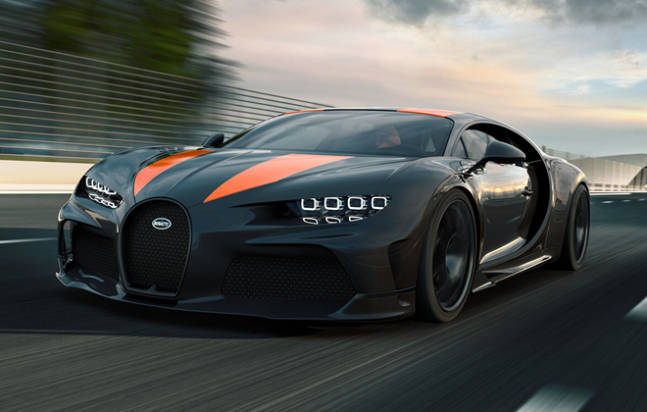
Bugatti Chiron Super Sport 300+ – 304 MPH (2019)
The longtail version of the Bugatti Chiron isn’t just a hyper-exclusive, bespoke supercar, it is literally the world’s fastest production car by a margin of 21.873 mph. That record was set in August of 2019, two years after the Agera RS, and the record still stands. How the Chiron Super Sport 300+ was able to reach this kind of speed is nothing short of remarkable. First of all, the naked carbon fiber body was extended nearly ten inches compared to the stock Chiron, and enhanced aerodynamics were added for increased downforce and decreased air resistance. The engine is a modified version of the quad-turbocharged 8.0-liter, W16 engine in the stock Chiron. In the Super Sports 300+, the mill makes 100 more horses for a total of 1,578.
The mindboggling 304+ mph record was set at Volkswagen’s Ehra-Lessien test track. The caveat here is that due to the surface of the test track, the Chiron Super Sport 300+ is not actually the official record holder because it did not perform the two passes required. The single pass, however, was fast enough to be recorded as the first production car to break the 300 mph barrier despite not holding the actual record. The Agera RS still holds the official record, but rest assured, it will not stand for much longer if the likes of Bugatti and SSC have something to say about it.

